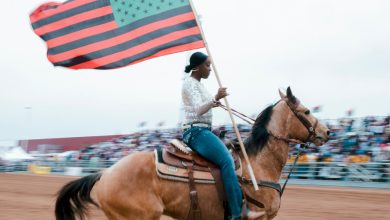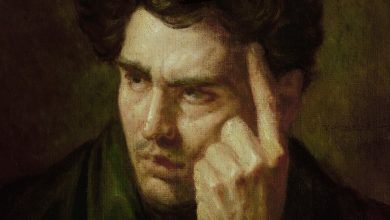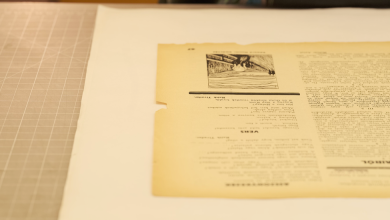‘Devil House,’ a Confident, Creepy Novel About a Wicked Unsolved Crime

John Darnielle lobs his novels in from the margins of American life. They’re lonely books, and they always get to me.
Darnielle is best known as the singer-songwriter behind the indie band the Mountain Goats, which has been around since the mid-90s. Since 2008, he’s also published fiction. Quietly, as if stealing in on cat’s paws, he’s become, as a novelist, unignorable.
His third novel, “Devil House,” is terrific: confident, creepy, a powerful and soulful page-turner. I had no idea where it was going, in the best possible sense.
“Devil House” is about a true-crime writer who moves into a house in Milpitas, Calif., where a pair of notorious and, it’s whispered, satanic murders occurred in the late 1980s. The suspects were disaffected teenagers, just as they were in a Milpitas murder and cover-up in 1981 that was fodder for the bleakly potent movie “River’s Edge” (1987).
What happens next in “Devil House” is complicated, and I want to be careful not to overelaborate. Darnielle’s plots are a sore spot with me.
When I reviewed his novel “Wolf in White Van” in 2014, I printed a decisive spoiler — I stupidly thought it wasn’t one — and I moped about it for a long time.
The writer’s name in “Devil House” is Gage Chandler. It’s a cocky name that suits his books — which are available in airports — if not quite his essence. He’s self-aware enough to know that, in telling the kinds of stories he tells, he’s sizzling in his own ethical fat.
Like Joan Didion, he knows he’s always selling someone out. Like Janet Malcolm, he senses what he does is morally indefensible. Maybe, with this new book, Chandler can right some wrongs. Maybe the novel we’re reading is a desperate rear-guard action to keep a soul in place.
“Devil House” is about the nature of crime writing, tabloid and otherwise. “What happens when somebody tells a story that has real people in it?” Darnielle writes. “What happens to the story; what happens to the teller; what happens to the people?”
But that may be the least interesting thing about it.
The thing about Darnielle’s writing, in all its forms, is this: If you’re that dorky outcast kid drawing a pentagram on the back page of your three-ring binder in algebra class, not because you want to drink anyone’s blood but because you think it’s cool, he sees you.
His novels are in close contact with the alternative cultural universes of fantasy and the occult and science fiction, yet they don’t resemble genre fiction. They’re earthy and fly low to the ground. They are plain-spoken and in no hurry.
They’re largely about the desolation and pain heaped upon the runts of life’s litter, young people who barely stand a chance. They seek escape in video games, in heavy metal, in monster movies, in an embrace of myth and legend.
“You learn to find,” Darnielle writes, “the stories you need.”
The house Chandler moves into has a tawdry history. It was a soda shop, a hardware store and a newsstand before it became a porn store, with a big sign outside that read “Monster Adult X,” so that truckers could see it from the highway.
The porn store’s owner, tired of rent hikes, abandoned the place, leaving the stock intact: VHS tapes, vibrators, viewing booths, inhalants. Some teenagers make it their clubhouse. Bored, they begin to redecorate. They’re pretty good artists, and they get carried away.
When they’re done, the place looks like a Marilyn Manson video set has exploded. There’s broken glass and animal bones and graffiti and elaborate effigies and video art and other buzzard-black touches.
Everything has been fried up as if in a goblin’s skillet. The result is wicked, in every sense of that word. The kids take some goofy, quasi-Luciferian pride in it all.
One day, the landlord and a property developer turn up. “No matter who you are,” Darnielle writes, “you always notice how the adults wreck everything as soon as they show up on the scene.”
The two are dispatched, gruesomely, with an enormous sword. Incredibly, no killer is caught. This is pre-internet, and the murders take on the quality of myth. There are rumors of “dead bodies atop a pyre of pornography, cryptograms in graffiti, the specter of teenage satanic rites.”
Chandler begins his reporting two decades or so after the murders, hoping to wrestle some clarity from “the muddy beginnings in which legends are conceived.” He’s methodical, obsessive. He pores over eBay listings, which have become a happy hunting ground for crime fetishists.
Chandler recounts these kids’ stories. He reconnects with a childhood friend. There are many subtle flicks in perspective.
Chandler reconsiders, at length, one of his early books, “The White Witch of Morro Bay,” about a young schoolteacher who murdered two students who broke into her apartment, stabbing one of them 37 times with an oyster knife. He receives a letter from the mother of one of the boys who was killed, and it affects him deeply — it’s a blow beneath the waterline.
“By what inevitable degrees,” Stanley Elkin asked in “The Dick Gibson Show,” his 1971 novel, “does bent become inclination, inclination tendency, tendency penchant, penchant disposition, disposition fate?”
That’s a restating of one of the issues that animates “Devil House.” It’s never quite the book you think it is. It’s better.




